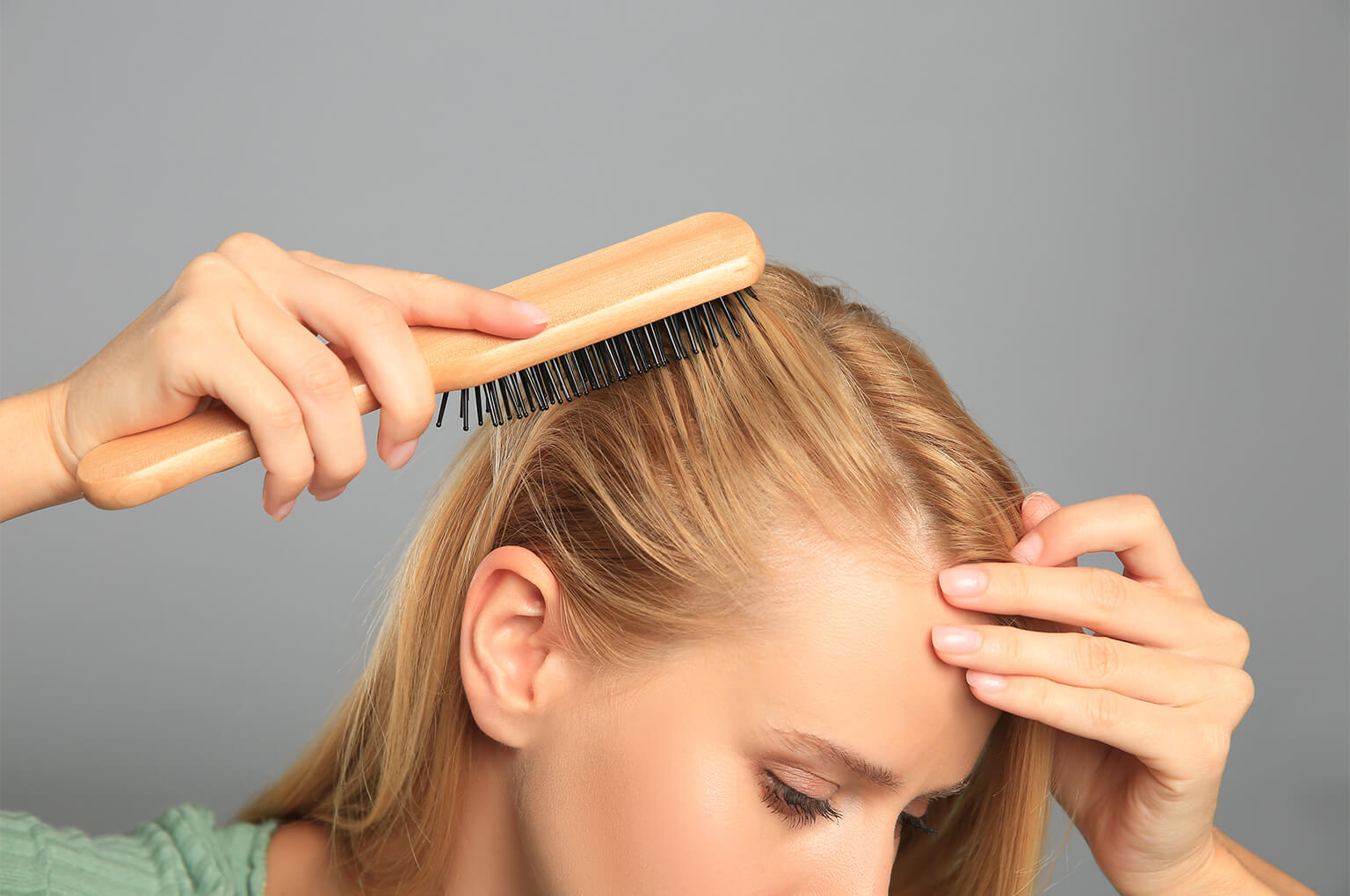The human body has an incredible capacity to heal itself. One of the body’s natural healing tools is platelets, which are components in the blood that play an important role in repairing damaged tissues. Using the advanced medical technology of SELPHYL® Science, we can use concentrated platelets (commonly called platelet-rich plasma, or PRP) to enhance the body’s natural healing capacity. These platelets can provide excellent treatment for hair loss and many signs of skin aging.
About PRP
Platelet-rich plasma (PRP) is a concentrate of plasma protein taken from human blood. Put simply, a sample of blood is extracted and then centrifuged to isolate the platelet-rich plasma from the blood cells. The concentrated PRP can then be injected directly into a target area of the body to promote greater healing capacity in that area.
PRP is used to treat a variety of health concerns because of its high concentration of platelets. These platelets are a reservoir of growth factors, which promote cell growth, wound repair, and collagen production. Growth factors found in platelets include:
- PDGF (Platelet-Derived Growth Factor) for cell growth, collagen production, and generation and repair of blood vessels
- FGF (Fibroblast Growth Factor) for cell growth, collagen production, and tissue repair
- TGF – β (Transforming Growth Factor Beta) for wound healing, growth and generation of epithelial cells (which protect the skin and other organs from external damage), and growth and generation of vascular endothelial cells (which protect blood vessels and play a critical role in regulating blood flow and immune response)
- IGF (Insulin Growth Factor) for regulation of cell growth
- KGF (Keratinocyte Growth Factor) for growth of keratinocytes (important skin cells that are essential for skin repair)
- EGF (Epithelial Growth Factor) for wound healing, new blood vessel formation, and epithelial cell growth (cells that protect the skin and other organs from external damage)
- VEGF (Vascular Endothelial Growth Factor) for wound healing and new blood vessel formation
PRP treatments are considered very safe. Because the PRP is taken from the patient’s own body, using it for treatment poses no risk of allergic reaction. Treatment risks are minimal, and the potential results when used as treatment for various dermatological concerns are highly encouraging.
The SELPHYL® System: Next Generation PRP for Next Generation Results
The technology of the SELPHYL® System allows us to take PRP to the next level. With a controlled and effective process that removes virtually all contaminating cells, SELPHYL® yields the newest generation of PRP: PRFM (Platelet-Rich Fibrin Matrix). PRFM creates a scaffold at the infusion site that protects and preserves the platelets, allows for sustained growth factor release, and serves as a reservoir for regenerative signaling.
Harvesting the PRFM begins with a quick blood draw from the patient, after which the blood is placed in a vacuum collection tube containing a proprietary design with cell separator gel. Next, the blood sample is centrifuged for six minutes to separate the plasma and blood cells above and below the gel. The platelet-rich plasma is transferred through a closed system to a second tube containing a small amount of calcium chloride, which causes fibrin polymerization to occur. After approximately 20 minutes, it forms into PRFM, which is then ready for use in treatment.
PRP Dermatology Treatments
Here at Kirsch Dermatology, we use PRP (PRFM) to treat hair loss and skin aging (skin damage).
PRP for Hair Loss
Rich in growth factors, PRP can help to stimulate hair regrowth for those who have experienced hair loss on the scalp. This treatment is especially beneficial for individuals with early hair loss. Using the SELPHYL® system, patients can receive multiple treatments of PRP for hair loss to maximize their potential results.
PRP for Skin Rejuvenation
Because PRP promotes cellular growth and regeneration of healthy tissues, it is an excellent resource for treating signs of skin aging and skin damage. It also stimulates the formation of collagen, which is abundant in healthy, youthful skin but diminishes as you age. One of the most popular ways to use PRP is for facial rejuvenation (“vampire facial”).
PRP for skin rejuvenation can treat:
- Fine lines and wrinkles
- Deep lines or creases
- Sagging skin
- Uneven skin tone or complexion
- Acne scars
- Dry, crepey, or thin skin
Each treatment is performed quickly in real time, as the SELPHYL® System needs only approximately 25 to 30 minutes to fully isolate and prepare your PRFM for reinjection. Treatments have no downtime and can yield excellent, natural-looking results.
Hair Loss Treatment FAQs:
PRP therapy involves using a patient’s own blood to extract concentrated platelets, which are then injected into the scalp to stimulate hair growth.
PRP contains growth factors that can promote hair growth by stimulating the hair follicles, increasing blood supply, and prolonging the growing phase of the hair cycle.
Generally, individuals experiencing early-stage hair loss or thinning are good candidates. However, it’s best to consult a specialist to determine suitability.
Typically, several sessions spaced a few weeks apart are recommended, followed by maintenance sessions every few months for sustained results.
Discomfort during the treatment is minimal. Some patients might experience mild soreness or discomfort at the injection sites post-treatment.
Side effects are usually mild, such as temporary swelling, redness, or bruising at the injection sites. Severe adverse effects are rare.
Skin Damage Treatment FAQs:
PRP can be applied topically or injected into the skin. It helps in collagen production, improves skin texture, and can reduce the appearance of scars or wrinkles.
PRP can be effective for treating acne scars, fine lines, wrinkles, sun damage, and certain types of skin discoloration.
Improvement in skin texture and appearance might be noticeable within a few weeks to months, with optimal results after multiple sessions.
Risks are minimal as PRP uses the patient’s own blood. Potential side effects include mild swelling, redness, or bruising at the injection site.
Results can vary, but regular maintenance sessions can help sustain the effects of PRP skin treatments for an extended period.
Those seeking to improve skin texture, reduce scarring, or address signs of aging like wrinkles or fine lines can consider PRP treatments after consulting a dermatologist or skincare specialist.
Remember, individual responses to PRP treatment can vary, so it’s crucial to consult a healthcare professional for personalized advice and treatment plans.



